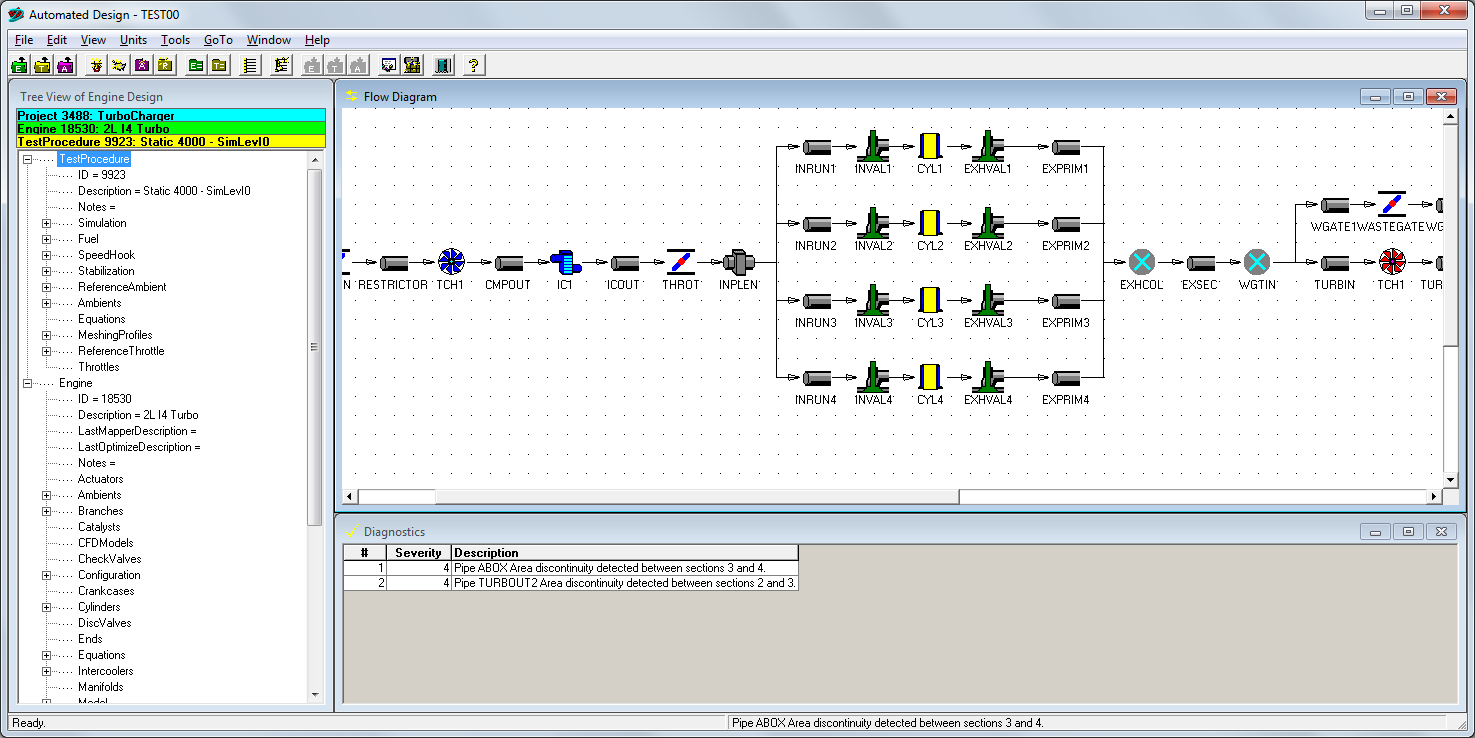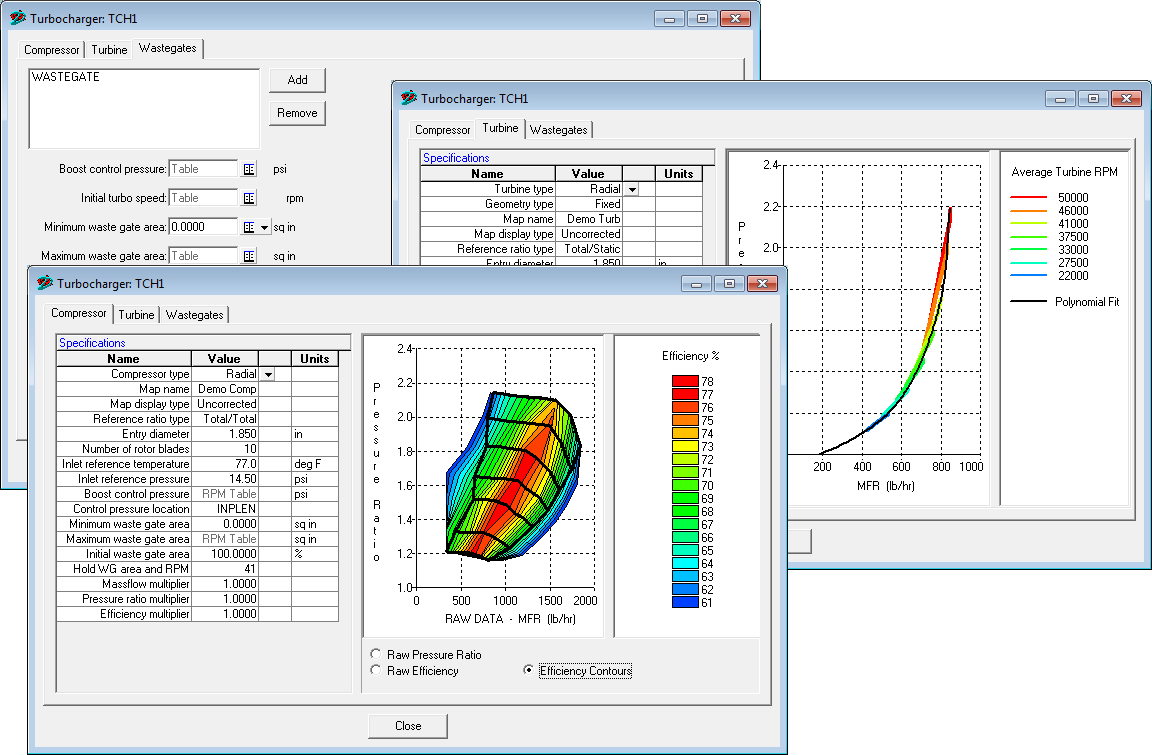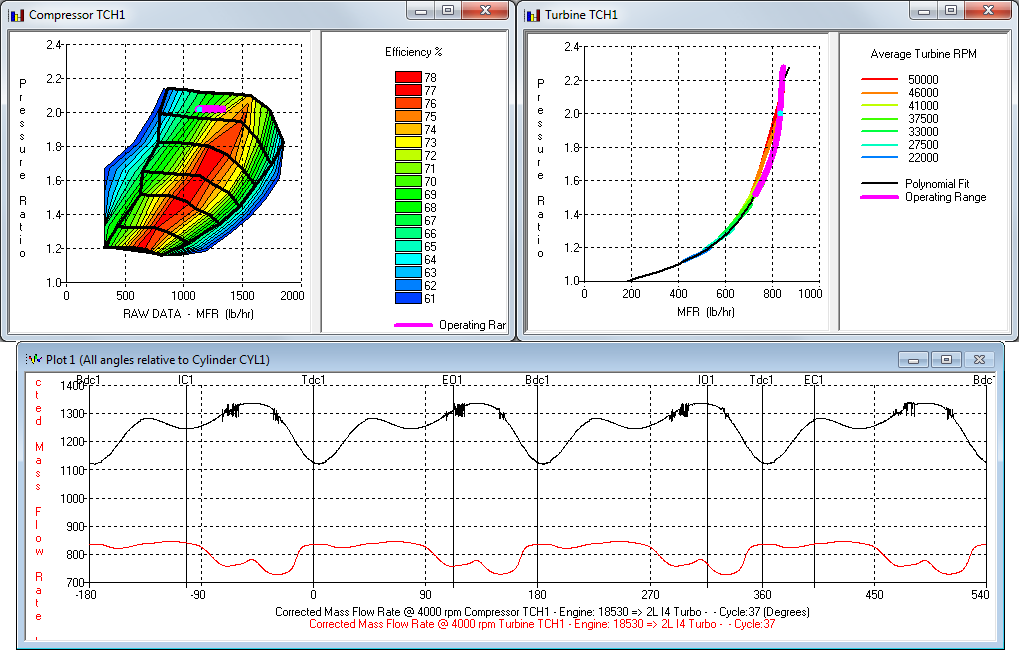Turbocharger
The application of forced induction in engine design is now widespread. The use of this technology in each new engine design poses challenging problems. What size of turbocharger is required? What characteristics do the compressor and turbine require? How best can this be matched to the engine? Virtual Engines provides the means to answer all these questions in a robust, user-friendly engine design environment that supports:
- Easy integration of manufacturer data.
- Fixed and variable geometry.
- Rapid scalability of input map data.
- Integrated waste-gate control.
Using a unique, full non-isentropic mathematical solver for both compressor and turbie components, Virtual Engines is able to predict the impact of each component on the unsteady gas dynamics in both upstream and downstream pipe networks, which directly equates to accurate prediction of engine and turbocharger operation.
Speed, mass flow, pressure ratio, and efficiency variations over the engine cycle are computed at every step of the calculation and available to the user through ANIMATE, Virtual Engines powerful postprocessing application that displays simulation results on a crank-angle basis.





